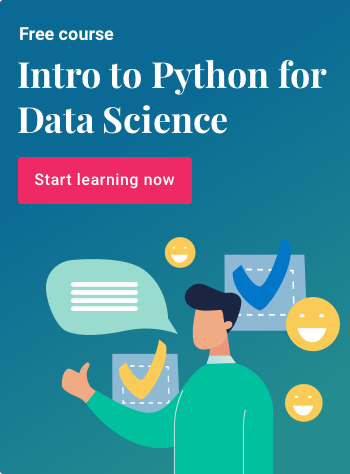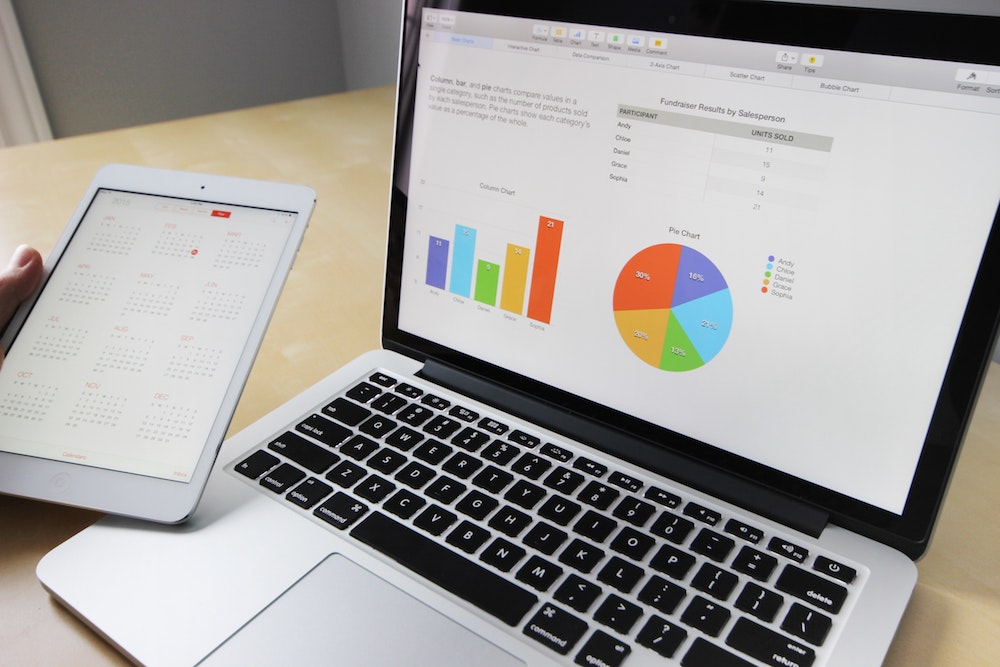31 Free Data Visualization Tools

In this article
- Free Data Visualization Tools
- Candela
- Chartbuilder
- Charted
- Chartist
- ColorBrewer
- Datawrapper
- Domo
- Dygraphs
- Ember Charts
- FusionCharts
- Geckoboard
- GoodData
- Google Charts
- Google Data Studio
- Highcharts
- iDashboards
- Infogram
- Klipfolio
- Leaflet
- Microsoft Power BI
- OpenHeatMap
- Oracle Data Visualization
- Palladio
- PivotTable.js
- Plotly
- Qlik Sense
- R Shiny
- RAWGraphs
- Tableau Public
- Webix
- Zoho Analytics

Data may be the buzzword of the decade (and the oil of the 21st century), but without the right storytelling tools, data is just data—boring, confusing, and uninspiring. Thankfully, it’s easier than ever before to find the free data visualization tools you need to start transforming numbers and statistics into workable strategies and business goals—and on a budget!

Free Data Visualization Tools
Candela
As an open-source suite of web visualization components that make use of the Python language, Candela emphasizes scalable, rich visualizations created with a normalized API for use in real-world data science situations. This includes components for dynamic rankings and other tools built by teams at Harvard University, the Georgia Institute of Technology, and the University of Washington, among others.
Chartbuilder
Don’t have a coding background? That’s completely alright. With Chartbuilder’s intuitive web-based application, creating charts and diagrams is a matter of copy and paste. Easy-to-understand buttons and settings, as well as a consistent display showing what your visualizations look like on mobile and desktop browsers, allow for a clean user experience.
Charted
Charted, created by the product science team at Medium, makes creating data visualizations as easy as using Google. Upload a CSV file or even a Google Spreadsheet and Charted will automatically generative an interactive visualization. A few more buttons and settings allow you to browse through additional Charted recommendations. In the end, it’s not as customizable as some other tools on this list, but for the absolute beginner or for someone looking to make quick visualizations, Charted is beautiful and powerful in its own way.
Chartist
Built on JavaScript, Chartist.js is styled with CSS to give users full control over the look and feel of their data. Fully responsive, Chartist is suitable for use on almost all commonly used browsers and comes with a slew of easy to implement animation options so you can create your own online data visualization. Best of all, it supports SVG graphics for crisp visualizations.
ColorBrewer
It’s difficult to tell a story well when your reader can’t distinguish different data points. This is where ColorBrewer’s dashboard comes in. In reality, this is not really a data visualization tool on its own but more of an additional tool to enhance your data storytelling. By providing options for colors and styles painted on a complicated map graph, ColorBrewer gives you the chance to experiment and make informed decisions on your data visualizations. It may seem confusing at first, but invest some time and it may become a useful addition to your toolbox.
Datawrapper
With its focus on providing code-free data visualization tools for the purpose of storytelling and journalism, Datawrapper has provided publications around the world with the tools they need to create fully responsive charts that are fast, interactive, and completely customizable to ensure that every chart fits the publication.
Domo
Domo purports to take data analytics to the next level by combining seven enterprise-scale systems to connect multiple sources of data and deliver them at high speeds. Domo also prepares and visualizes code in a collaborative environment through the use of artificial intelligence tools and custom applications that extend the use of Domo’s core technologies to bolster its support for large-scale projects. Best of all, it’s easy to port over your current systems and architectures.
Dygraphs
While Dygraphs is another JavaScript charting library, it can handle large data sets and creates completely interactive data visualizations. Its support for error bars and confidence intervals is specific but makes it suitable for the data-minded looking to dive a little deeper into huge chunks of data.
Ember Charts
Built on Ember.js and d3.js, Ember Charts improves where D3 is lacking, focusing on creating an easy-to-use visualization platform. Open-source and fully customizable, Ember Charts also comes with a robust set of features and is stable enough to prevent charts from breaking. It’s a perfect selection from the toolbox of free data visualization tools for web based data visualization.
Get To Know Other Data Analytics Students
Jo Liu
App Quality Analyst at Snap Inc.
Nelson Borges
Insights Analyst at LinkedIn
Rahil Jetly
Sales Operations Manager at Springboard
FusionCharts
Built on JavaScript, FusionCharts provides ready-to-use code snippets to create your own data visualizations based on popular templates from the typical bar and column charts to treemaps and waterfall charts. One of the biggest benefits of using FusionCharts is that it integrates perfectly with popular JavaScript frameworks, as well as front-end and back-end frameworks, allowing for a greater level of customization.
Geckoboard
Free for 30 days, Geckoboard’s dashboard allows for beautiful data visualizations through over 60 code-free integrations with spreadsheets and Geckoboard’s data set API. In other words, mastering this tool is less about muddling through lines of code and more about dragging and dropping blocks and then fine-tuning them through an easy-to-use platform. Geckoboard is part of a family of interactive visualization tools that help users create beautiful, powerful and dynamic data visualization without knowing any code.
GoodData
GoodData is a cloud-based data visualization tool that has a special emphasis on providing the fastest connection to your data. It’s relatively easy to adopt as it provides real-time insights that are simple to embed into any applications or workflows currently in use. It’s an online data visualization tool that can help you quickly generate dynamic data visualizations.
Google Charts
If you’ve worked with Google Docs or Google Sheets, you’ve likely come across Google’s own data visualization platform, Google Charts. Integrated into their Docs and Sheets applications, Google Charts is also available as a free web application that offers an even wider range of charts and visualization tools that are supported across most web browsers. Boasting an easy-to-use interface and dynamic data connection tools, Google Charts is one of the best free data visualization tools available right now.
Google Data Studio
An extension of Google Charts, Google Data Studio provides further functionalities to create full reports based on analytics. These reports are fully customizable with data visualizations and trackable via Google Analytics, giving you a wider view of your data. Most importantly, its integrations with Google’s other products, like Google Sheets and Google Cloud Storage, is crucial for any pre-existing user of Google’s suite of digital solutions.
Highcharts
Highsoft’s venture into data visualization, Highcharts, works with any back-end database or server stack. The downside is that Highcharts is only free for non-commercial use, but it comes with flexible license pricing. Regardless, one of the biggest benefits of this online tool is that its source code is downloadable, offering you 100% customization with minimal knowledge of code. Highcharts also supports most popular languages, has a framework for optional added coding customizations, and is completely big data ready.
iDashboards
One of the biggest problems in dealing with data is the multitude of sources a single set of data can come from. iDashboards helps to minimize the time and resources required to sift through data, combining data from spreadsheets, databases, and web APIs into a single automated dashboard customized to your needs. iDashboards also emphasizes its intuitive design in order for non-data people to grasp the basics of the free tool.
Infogram
Beautiful and highly customizable, Infogram features a Microsoft Word-style dashboard that carries the capabilities of Excel and most other visualization platforms. It’s drag-and-drop markdown menu style also allows for solid reports to be created, helping to bring data storytelling to the next level.
Klipfolio
Like many of the tools on this list, Klipfolio is completely usable without knowledge of code. However, it does include the ability to inject custom HTML scripts into your dashboard to make it your own. Nevertheless, its hassle-free data connections from spreadsheets, files, and databases are supported with pre-built templates that cover a wide range of use cases. It also provides additional functionalities for client management by providing access to live data tracking the progress of your engagements.
Leaflet
Leaflet is another open-source JavaScript library that specializes in mobile-friendly, responsive, and interactive maps. With particularly readable source code and documentation, Leaflet is easy to pick up for beginner coders and works well across different platforms. Like all other open-source libraries, it’s part of a selection of free data visualization tools that have community support.
Microsoft Power BI
Recognized as a leader for analytics and business intelligence platforms for 12 years now, Microsoft Power BI is the tech giant’s own venture into analytics. Despite being a free platform for data visualizations, it is jam-packed with features for collaborating with your team, such as shared dashboards and interactive reports. Power BI is a powerhouse team tool that has been built with a focus on security and teamwork.
OpenHeatMap
OpenHeatMap is much more specialized than most of the tools on this list, but because of this specialization it is able to create specific types of map charts more effectively and easily. Simply upload your data and an interactive online map will be created within seconds. While this application may not be the most up-to-date among online data visualization tools, it’s a solid start for anyone without coding experience looking to visualize map data.
Oracle Data Visualization
Previously known as Oracle Visual Analyzer, Oracle Data Visualization is a platform for visual data storytelling. It provides functions to automatically visualize data with a drag-and-drop style menu. Layout changes are also easy to make with a click of a button.
Palladio
Developed at the Humanities + Design lab at Stanford University, Palladio is a browser-based visualization tool built to handle immense amounts of historical data with relative ease. Palladio is, however, more specialized, focusing on specific case studies and research questions. Some of these features include a gallery view, list view, map view, and a special graph view for illustrating relationships between data points.
PivotTable.js
For those familiar with Microsoft Excel, pivot tables are a complex but powerful tool for distilling and displaying data. An interesting means of data storytelling, PivotTable.js is a free web pivot table that allows users to explore data using an easy drag-and-drop format.
Plotly
An open-source library for R, Python, and JavaScript, Plotly works seamlessly with its enterprise-ready deployment servers to enable easy and code-free collaborations. For those with some knowledge of coding, tutorials and further guidance enhance Plotly’s functionalities. Plotly has powerful tools for data analysts and data scientists alike to integrate their data visualization online, and create interactive visualization tools where users can dynamically generate their own insights.
Qlik Sense
Qlik Sense is the new iteration of QlikView, a data visualization tool that works based on an associative engine. The next-gen analytics platform combines its existing associative engine with powerful augmented intelligence and a multi-cloud architecture to make creating enterprise-level analytics dashboards easier. By focusing on interactive analytics, Qlik Sense allows you to go further with your data through AI-powered insight suggestions and conversational analytics built to work on any device.
R Shiny
For the everyday data scientist who works with R, Shiny from R Studio makes data storytelling even easier. R Shiny allows you to create interactive web applications directly in R to host on a webpage or embed in R Markdown documents or in dashboards. With a little bit of knowledge of CSS, HTML, and JavaScript, it’s entirely possible to create something unique.
RAWGraphs
Aiming to bridge the gap between spreadsheet technology and vector graphics editing applications like Adobe Illustrator, RAWGraphs allows you to insert data and customize charts on their web application. These charts can then be exported either as vector SVG files or raster PNG images, giving you a wide berth in terms of customization and presentation. Furthermore, this open-source tool processes your data in house, guaranteeing the safety and security of your data.
Tableau Public
The free-to-use version of Tableau Desktop comes packed with useful features that help to make this product feel like a full-fledged tool rather than freemium software. The caveat: everything you create is public and viewable on Tableau’s visualization gallery and so by default, every one of your visualizations is going to turn into web based data visualization. However, if that doesn’t affect your work, Tableau Public could be exactly what you need.
Webix
While D3.js is highly recommended, it’s also notorious for its steep learning curve. Webix is a much more user-friendly platform and is sadly often overlooked. With great support from the Webix team, this framework is stable and usable with large amounts of data, especially given its regular updates.
Zoho Analytics
Previously known as Zoho Reports, Zoho Analytics is a self-service BI and data analytics software that specializes in creating beautiful visualizations and insightful dashboards within minutes. Zoho Analytics also makes creating visualizations easy by providing assistance through Zia, its own proprietary artificial intelligence assistant, to help you make informed decisions in your storytelling journey. It’s a powerful web based data visualization tool.
For more data analytics resources, check out:
- 10 Best Data Storytelling Courses To Boost Your Skills
- The Definitive List of Data Analytics Tools
- Which Industry Pays the Highest Data Analyst Salary?
- How to Create a Potent Data Analyst Resume
- Springboard’s Data Analytics Career Track—learn both the technical and business thinking skills needed to get hired. Job guaranteed!
Since you’re here…
Interested in a career in data analytics? You will be after scanning this data analytics salary guide. When you’re serious about getting a job, look into our 40-hour Intro to Data Analytics Course for total beginners, or our mentor-led Data Analytics Bootcamp—there’s a job guarantee.





